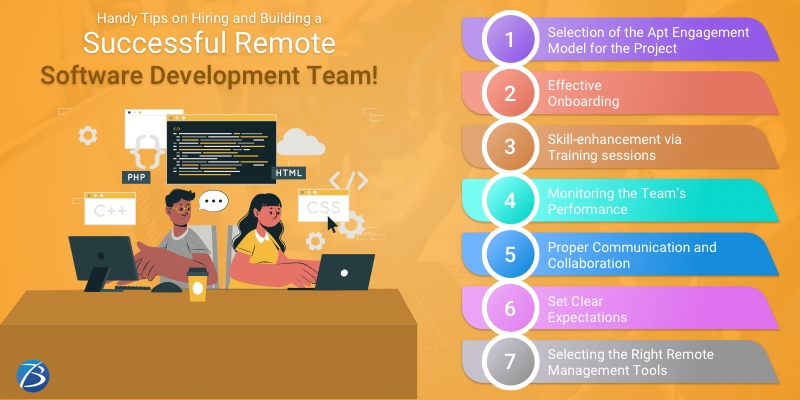Estimating Prices of Offshore Software Services: A Guide for US Companies!


US entrepreneurs and companies have emerged as global leaders in technology over the past two decades. But surprisingly, most of US-based firms face a severe challenge due to the shortage of local software developers. At times, they cannot match with the package expectations of the local developers and this costs the companies a big-time, leading to business losses.
This is where the concept of hiring an offshore software development workforce comes into the picture. Over a few years, outsourcing has successfully resolved the critical issue of shortage of developers for US firms to a great extent. Today, these firms are availing top-notch software services from any corner of the world.
But another challenge that these companies face is that the costs of offshore software developers and the services aren’t uniform globally. Every country has different rules, practices, and cost considerations. So this blog is meant to help US businesses in this scenario. Here we have jotted down in detail the components that affect offshore development costs, region-wise hourly rates, various outsourcing models, etc. for estimating costs of offshore development services. So, let’s get started.
Fundamental Components Affecting Offshore Software Development Costs

Size of the Software Project
Project size directly affects the development costs. The higher the number of screens, features, and other factors, the higher will be the team required and so is the cost. For instance, a small software app will have between 10-25 screens and a larger app will have 40+ screens. So, the efforts and overall costs will hike accordingly.
Technical Considerations of the Project
Technical aspects like software architecture, UI/UX designs, tools and methodology selected, third-party integrations, etc. influence the cost of the project. Ultimately, it depends on the quality of the software product you are looking for.
Time to Market
Whether you want to bring your product early to the market or want to give it more time, both will affect the development costs. Also, deadlines affect the software project in myriad ways. For example, if you have an excellent idea but the timeframe to complete the project is shorter, chances are, it will affect the R&D, planning, and overall development. In such a case, you will have to hire an extended team of experienced developers to get things done efficiently and quickly, incurring higher costs.
Skills and Expertise of the Offshore Team
The knowledge, experience, and skills of your offshore development team are directly proportional to the project costs. If your project is simple, you can hire developers with comparatively less experience and skills. But if your project is complex, you need a qualified team of senior developers and this adds to the project costs.
Additional Costs
The offshore companies may charge extra for maintenance and support, some licenses like HIPAA in healthcare apps, infrastructural costs, etc. They may even charge in case the clients want some modifications. So, such factors should be clarified beforehand to avoid any ambiguity.
Region-wise Hourly Rates of Offshore Software Development Services Worldwide
North American Regions and Western European Countries: These countries charge the highest rates as compared to most of the other regions worldwide. Have a look.
- New York: $58.44
- California: $58.96
- Washington: $55.01
- Texas: $46.11
- UK: $71
- France: $82
- Netherlands: $60
- Germany: $56
- Sweden: $67
Eastern European Countries: The average hourly rates in these countries range from $20 – $50. These countries include:
- Belarus
- Poland
- Slovakia
- Ukraine
- Bulgaria
- Romania
- Estonia
- Czech Republic
- Hungary
African Countries: The average hourly rates of countries in Africa range from $20 – $40; which include:
- Tunisia
- South Africa
- Belarus
- Kenya
- Nigeria
- Polan Egypt
- Morocco
Countries in Latin America: The average hourly rates in Latin American countries range from $30 – $50. They include the following:
- Brazil
- Argentina
- Chile
- Costa Rica
- Columbia
- Panama
- Mexico
- Peru
Asian Countries: Asian countries have average hourly rates that range from $18 – $40. India ranks in 1st position as an offshore destination in the Asia region. The countries that provide outsourcing services include the following:
- India
- Indonesia
- Malaysia
- Vietnam
- Thailand
- Pakistan
- Nepal
- China
- Bangladesh
- Philippines
A Glimpse at Diverse Outsourcing Pricing Models
- Manager Team Model or Dedicated Development Team Model
- Extended Development Team Model or Staff Augmentation Model
- Outsourced Product Development Model or Project-Based Model
In this model, the offshore software development services
provide an entire team of expert software development professionals and this team operates independently. It is managed by a Lead or Project Manager from the offshore company and is responsible for reporting to the client firm. This type of model ensures effective communication between both parties, assures high-quality results, saves time for the internal team, and eliminates the risks to a great extent. This model is the best choice when you want a highly experienced team with good technical expertise and want to lead the software development process and decision-making of the project.
This business model includes the addition of offshore software developers to the existing in-house team of the clients as and when required for the project. This boosts the overall efficiency of the in-house team while being in total control of the project. This type of model helps in improving development capacity and project output. It is a scalable and flexible model and leads to a substantial reduction in costs of development, operations, and HR as well. This model is beneficial when the internal team lacks some kind of skills or expertise or when there is an urgent requirement for additional technical staff.
This is a traditional model which frees the client company from the entire burden of the software project. Here, the offshore team takes complete control of the project and builds the software products as per the predetermined expectations of the clients. In this model, the client company has limited control over the project. They need to provide the initial details and specifications. The benefits of this model include- (1) lower time commitment from clients’ end, and (2) exact estimations of the project timelines and final outcomes. This model is the best option when the project scope is quite static and clients do not want to handle the burden of the project management. Besides, this model is good to go with when the project you are developing isn’t your core project.
Why India Has Emerged as a Global Favourite for Offshore Development Services?
For 15 years consecutively, India has remained the top-favorite destination of the US companies and other European countries too, for outsourcing software projects. Almost 50% of fortune 500 companies prefer India alone for their IT development services. Besides the software sector, India is a popular outsourcing destination for other services like BPO, LPO, KPO, engineering, R&D, etc. So, why India? Here are the potential reasons:
- India is one of the largest English-speaking countries in the world, as per a BBC report, and hence, there is no or very little language barrier during project development. This improves communication, collaboration, and coordination of clients and offshore teams.
- Budget-friendliness is another major reason behind the preference of India by the US and other western countries. As compared to the local developers, the average rates of developers in India are 30-35% lower.
- Offshore software developers in India are known for delivering excellent quality products and services that meet the required global standards. India is home to the largest number of ISO 9000 certified IT firms and 75% of the world’s CMM Level 5 certified firms.
- The availability of a massive talent pool is another driving force that attracts US companies to India. With a population of 1.3 billion, India boasts of highly educated, experienced, and certified software professionals.
- To meet the business requirements of the clients, most of the Indian IT companies ensure flexibility in time zones, cultural differences, etc. making the offshoring process seamless.
- Lastly, the favorable policies of the Indian Government are like a cherry on the cake. Their policies are designed for promoting ease of business in India. Also, there is a huge infrastructural support and numerous IT parks are often being developed across the country.
Are You Interested in Building a Top-Class Website or Mobile App?
Final Thoughts
Partnering with offshore software development services cuts down several costs. It also helps protect your business from any probable issues that may occur during remote collaboration with the offshore partner. But before partnering with offshore software developers in India or any other country for that matter, it is always a good idea to calculate the approximate costs of project development beforehand. So, this blog is meant to make this calculation easier. Hope this helps.
That’s it for now!
Share your thoughts in the comments section and for any assistance on offshore development, reach out to us.


